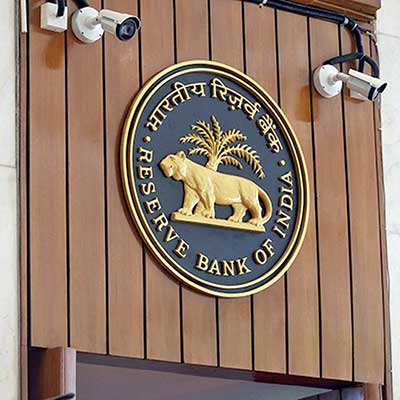Relevance: GS-3: Indian Economy and issues relating to planning, mobilization of resources, growth and development.
Key Phrases: Reserve Bank of India, Repo Rate, Cash Reserve Ratio, Monetary Policy Committee, Control Inflation, Countering US federal rates, Monetary and Credit Policy, Borrowers and Depositors, Indian economy, Accommodative Policy.
Why in News?
- This recent announcement of RBI to Repo rate hike will make rates of all loans more expensive.
Context:
- In a surprise move, the Reserve Bank of India (RBI) Governor has announced that the MPC voted unanimously to increase the policy repo rate by 40 basis points (bps) to 4.40% with immediate effect, citing persistent inflationary pressures in the economy.
- This is RBI's first increase in borrowing rates since August 2018.The central bank also hiked the cash reserve ratio by 50 basis points.
- The decision was taken by the Monetary Policy Committee (MPC) in an off-cycle meeting with the central board held on May 2-4.
Repo Rate
- Repo rate refers to the rate at which commercial banks borrow money by selling their securities to the Central bank of the country i.e Reserve Bank of India (RBI) to maintain liquidity, in case of shortage of funds or due to some statutory measures. It is one of the main tools of RBI to keep inflation under control.
Why has RBI Gone for A Sudden Out-of-Turn Rate Hike?
- Control Inflation:
- The RBI had sounded a note of caution in its April policy meeting stating that price stability will henceforth take precedence over growth as consumer inflation surged as a consequence of the Russia-Ukraine conflict.
- March CPI inflation of 6.95 per cent was much above the upper limit of RBI’s tolerance band. With global prices of fuels as well as other commodities remaining high through April 2022, it is likely that CPI reading April would also be quite high.
- RBI has been behind the curve, waiting for inflation to cool over the past months, even as other central banks have been hiking rates. This has led to the fairly large 40 bps hike in repo rate.
- Countering US federal rates:
- The other reason that seems to have prompted RBI’s move is the impending Federal Open Market Committee decision.
- US Federal Reserve has begun its rate hike cycle in March 2022 and is expected to hike the Federal Fund rate rather aggressively, by at least 50 basis points.
- If the RBI fails to act now, the spread in the sovereign bond yields of India and US will narrow resulting in accelerated foreign capital outflows. FPIs have already pulled out close to ₹14,000 crore from Indian debt since February 2022.
Cash Reserve Ratio (CRR)
- It is a specific part of the total deposits that is held as a reserve by the commercial banks and is mandated by the Reserve Bank of India (RBI).
- This specific amount is held as a reserve in the form of cash or cash equivalent which is stored in the bank’s vault or is sent to the RBI. CRR ensures that the banks do not run out of money.
- Cash Reserve Ratio in India is decided by the Monetary Policy Committee (MPC) under the periodic Monetary and Credit Policy.
Why RBI Raised CRR Too?
- Excessive liquidity in the system results in higher inflation and the RBI has been trying to suck out liquidity through various tools in the previous policies.
- The hike in CRR by 50 basis points is yet another move towards this end. The central bank has stated that ₹87,000 crore of liquidity will be withdrawn through this move.
How will This Affect the Borrowers and Depositors?
- Interest rates on loans will begin moving higher.Many banks including SBI, Axis Bank and Bank of Baroda have increased MCLR over the last few days, making rates of all loans more expensive. MCLR will undergo further upward revision with this move.
- The repo rate hike is however a good news for savers who have been witnessing negative real interest rates on their investment. With returns on saving products such as bank and NBFC deposits and small saving schemes, fixed income investors will benefit. Those holding sovereign and corporate bonds will however see erosion in value as yields increase.
Will this Rate Hike Slow the Nascent Recovery in Indian Economy?
- This will definitely impact consumer demand for houses, consumer durables and other discretionary items.
- With credit to the large companies and industries just beginning to revive, the rate hike could slow down credit growth to industry too. But over the longer-term, price stability will play an important role in supporting demand.
Conclusion:
- The RBI cannot afford to go towards aggressive monetary tightening like other advanced economies because the economy is not completely out of the woods yet.
- While there are signs of mild revival in investment cycle, private consumption is yet to move strongly above pre-pandemic level.
- External risks from the ongoing geopolitical tensions, high commodity prices and slow-down in China threaten growth forcing RBI to continue with its accommodative policy.
Source: The Hindu BL
Mains Question:
Q. Discuss different tools of the monetary policy of the RBI. Examine the effects of the recent rate hike by the RBI on the borrowers and depositors.








